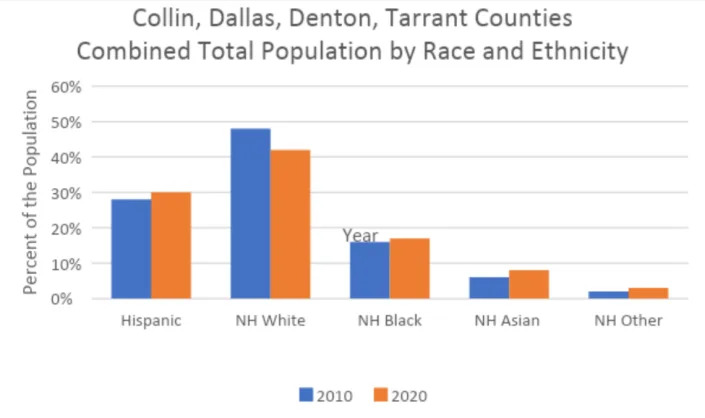Paul Lay
Sat, January 7, 2023
In this article:
Toussaint Louverture
Haitian general and revolutionary
Henri Christophe
President and King of Haiti (1767-1820)
Jean-Jacques Dessalines
Leader of Haitian Revolution and first ruler of independent Haiti (1758-1806)

'Black Spartacus': Toussaint Louverture, leader of the Haitian Revolution by de Baptiste (1875) - Photo 12/ Universal Images Group via Getty Images
By the time of the French Revolution, France’s colony of Saint-Domingue, the western portion of the Caribbean island of Hispaniola (now Haiti), was the most valuable plot of land on Earth. The wealth of the “Pearl of the Antilles” came from the new-found European taste for sugar and coffee – it produced half the world’s supply of both and was responsible for one third of French maritime trade.
But the economy of Saint-Domingue was underpinned by the violence and suffering inflicted on almost half a million enslaved Africans, who vastly outnumbered the white population of 40,000, and the slightly smaller – and free – mixed-race population. More than 300 Africans arrived in chains every week to be “fed into the slave machine”.
A slave revolt had long been feared, and brute force was the plantation-owning class’s way of maintaining order. Memories remained fresh of the fate of François Makandal, a Maroon – an escapee from slavery – who had been taken to the bustling, metropolitan city of Cap-Français to be burned at the stake in 1758 for inciting rebellion. The fear was finally realised in August 1791, amid tensions between the ruling classes exacerbated by the French Republic’s declaration of the Rights of Man and its opposition to slavery. Hundreds of plantations in the fertile north were ravaged, and both white and mixed-race settlers were massacred on a horrendous scale.
The aftermath of these tumultuous events is now the subject of two very different books. Sudhir Hazareesingh’s Black Spartacus (★★★☆☆), an “epic life” of François-Dominique Toussaint Louverture, the leader of the Haitian Revolution, has already won high praise and the 2021 Wolfson History Prize. Scholarly and highly readable, it is occasionally too much of a love letter to its subject: “Great Man” history, long disparaged among academics, is still acceptable, it seems, with a change of cast. Paul Clammer’s Black Crown (★★★★☆), however, a life of the less well-known Henry Christophe, who became King Henry I of Haiti in the years after the revolution, grasps the essential tragedy of history, in all its ambiguity and contingency.
Christophe, born into slavery on Grenada, would become a lieutenant of the much-feted Toussaint Louverture, a former coachman who became a free man in his 30s. Louverture subsequently owned slaves of his own, as a coffee-planter.

The Rebellion of the Slaves in Santo Domingo by the French School, an 18th century coloured engraving of the 1791 insurrection - Archives Charmet
Where historical fact is sparse, mythology flourishes, and there is uncertainty about what role Louverture actually played in the 1791 slave revolt. The plot appears to have been hatched on August 14, and unleashed a week later, when the Colonial Assembly was due to meet in Cap-Français. Its leader was Boukman Dutty, another coachman but also a priest.
The violence, according to one witness, “would make Nero blush”, and panicked whites fled to the cities and towns. It can be said with some certainty, however, that Louverture saved the wife of his former master by escorting her to safety from their plantation. Louverture, unlike many of his fellow revolutionaries, was open to white allies and believed to the end that the plantation system – albeit one manned by free labourers – was essential to future prosperity.
The embattled white colonists invested their hopes of restoring the old order in the British, who arrived to do just that in 1793; they failed when their forces were devastated by yellow fever. France, desperate to keep Saint-Domingue within its orbit, endorsed its commissioners’ decision to abolish slavery there in 1794.
By then, Louverture’s star was in the ascendant, though dependent upon the support of his army of former slaves and a strong relationship with the governor, Etienne Laveaux, who was the first to proclaim him “Black Spartacus”. He was faithful to France, sending his two sons to be educated there, but with Laveux’s departure, the metropole became ambivalent in its commitment to the freedom of Saint-Domingue’s black population – a red line for Louverture.
Napoleon, now similarly ascendant, had no such uncertainty and, having made peace with Britain in 1802, he launched an expedition to Saint-Domingue, led by his brother-in-law, Charles Victor Emmanuel Leclerc. Louverture was outlawed and cracks appeared in his already fractious alliance. Then he made a fatal mistake. He sought a truce with the French, but was arrested, transported to France – on a ship called The Hero – imprisoned in a medieval castle in the Jura mountains, and died within eight months.

An illustration of English General Thomas Maitland and Haitian revolutionary Toussaint L'Ouverture as they sign a treaty in March 1798 - Science Source/Photo Researchers History/Getty Images
The fate of his cause was now in the hands of two men, once his deputies, who may have conspired against him: Jean-Jacques Dessalines and Henri Christophe. Learning from the errors of Louverture, they sought to eliminate all rivals, press labourers back to work on the plantations, and indulge the French forces on Saint-Domingue just long enough that they would succumb to yellow fever, just as the British had done and Leclerc would do.
Their plan worked, and at the Battle of Vertières they defeated the weakened French. Soon the last of the colonial forces would be shepherded into captivity on Jamaica courtesy of the Royal Navy. On December 5 1803 – the same day that, 311 years before, Columbus had made landfall on the island – a new free nation was born: Haiti.
A Declaration of Independence was signed on January 1 1804, first by Dessalines, then by Christophe. Dessalines’s secretary observed that the ideal arrangement would be for “the skin of a white to serve as parchment, his skull as an inkwell, his blood for ink, and a bayonet for a pen”.
The slaughter of French residents followed, as did war against the French garrison that remained in Santo Domingo, the Spanish, eastern side of the island. It was clear that power rested on military strength and the regime commissioned the vast Citadelle fortress, designed by Henry Barré, which was to tower over northern Haiti. Restrictions were placed on labour and movement, and Dessalines became Emperor Jacques I. He would soon fall victim, in the southern city of Port-au-Prince, to an alliance of northern Maroons and the southern free mixed-race population crushed by Louverture. “Cruel poetry,” observes Clammer.
Civil war followed between north and south, with former ally Alexandre Pétion president of the southern Republic of Haiti. After Dessalines’s death in 1806, Christophe declared himself King Henry I. Apologists argued that the institution of monarchy was a link to Africa’s own dynasties: “Are there not in Africa an infinity of empires, kingdoms, and independent states?” And did the Taino, Haiti’s original inhabitants, not have their own hereditary chiefs, the caciques?

‘Destroyer of tyranny’: King Henry I of Haiti (formerly Henri Christophe); - Chronicle / Alamy Stock Photo
Whatever the reasoning, Christophe enjoyed the trappings. He took the additional titles of “Destroyer of Tyranny, Regenerator and Benefactor of the Haitian Nation…” and so on. He expanded the aristocracy, threw banquets, and built a palace, Sans Souci (named, probably, after a celebrated Maroon rather than Frederick the Great’s Potsdam residence). It was decorated with Greek gods and heroes depicted as Africans.
More productively, his navy intercepted slaving vessels, freeing those aboard to make a new life in Haiti. On one occasion, rescued Hausa children danced before him at court. His actions caught the attention of Joseph Banks, president of the Royal Society, who wrote: “To see a set of human beings emerging from slavery, and making rapid strides towards the perfection of civilisation, must I think be the most delightful of food for contemplation.” The abolitionist William Wilberforce paid for the passage to Haiti of Prince Saunders, a teacher in Boston’s African school, who introduced smallpox inoculation and played a key role in education policy.
But amid the progress, there was capricious brutality. Typical of this was the fate of a merchant, Vilton, a godfather of Christophe’s daughters, who in 1802 had tried to persuade him to surrender to Leclerc. He was put to death in 1819 for an alleged affair. An adulterous countess, meanwhile, was “obliged to ride through the streets of Sans Souci in a state of perfect nudity, at noon-day, on the back of a donkey, with her face toward the tail”.
It all came crashing down when, on August 15 1820, the king had a stroke while attending mass, just as a huge fire swept through Port-au-Prince. Knowing both the south and the French were empowered, King Henry committed suicide with a shot to the heart. Amid scenes of more brutality, his male heirs were butchered and his wife and daughters sent into exile. While Toussaint Louverture’s story is a heroic one, it is Henry’s tragedy that is the more compelling.
Black Spartacus by Sudhir Hazareesingh is published by Penguin at £10.99. To order your copy, call 0844 871 1514 or visit Telegraph Books
Black Crown by Paul Clammer is published by Hurst at £25. To order your copy for £19.99. call 0844 871 1514 or visit Telegraph Books

















